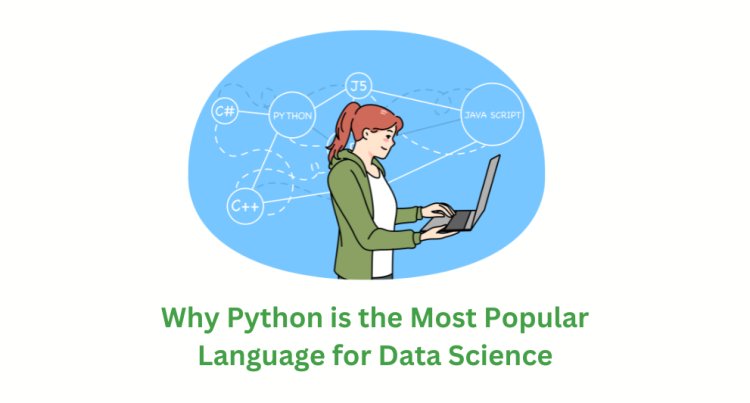Why Python is the Most Popular Language for Data Science

Python has emerged as the backbone of data science, playing a pivotal role in solving complex data problems and driving innovation across industries. Its popularity is no coincidence but a result of specific attributes that make it an unparalleled choice for data science professionals. Let’s delve deeper into why Python continues to reign supreme in the data science domain.
1. Easy to Learn and Use
Python’s simplicity is its hallmark. For data science beginners and seasoned professionals alike, its readability and user-friendly syntax minimize the time spent on learning and troubleshooting.
- Natural Language-Like Syntax: Python’s code reads like plain English, which enhances productivity by reducing cognitive load.
- Short Learning Curve: It’s especially beneficial for professionals transitioning into data science from non-technical backgrounds like business or marketing.
- Quick Prototyping: Python allows for rapid development and testing of ideas, enabling quick prototyping of data models.
2. Comprehensive Library Ecosystem
Python offers an unmatched range of libraries that simplify every step of the data science workflow.
- Data Manipulation and Cleaning:
- Pandas: Handle structured data and perform tasks like filtering, grouping, and joining datasets.
- NumPy: Efficiently handle numerical data and perform mathematical operations.
- Statistical Analysis:
- SciPy: For advanced statistical computing.
- Data Visualization:
- Matplotlib and Seaborn: Generate compelling static and dynamic charts.
- Plotly: Create interactive visualizations for dashboards.
- Machine Learning and AI:
- Scikit-learn: Simplifies implementing classification, regression, and clustering models.
- TensorFlow and PyTorch: Power advanced deep learning applications like natural language processing and image recognition.
- Big Data and Automation: Libraries like PySpark make working with distributed systems efficient, integrating seamlessly with Hadoop ecosystems.
3. Platform Independence and Versatility
Python’s cross-platform compatibility means you can write a Python script on one operating system and run it on another with minimal changes.
- Adaptable Across Domains: Whether it's finance, healthcare, retail, or marketing, Python caters to diverse applications such as fraud detection, sentiment analysis, or product recommendations.
- Integration Capabilities: Python can connect with other programming languages and platforms, making it ideal for hybrid environments.
4. Vibrant Community and Resources
Python’s popularity is amplified by its vast community of developers and data science practitioners who contribute to its evolution.
- Open Source Contributions: Regular updates and new libraries keep Python on the cutting edge.
- Support for Learners: Access to countless tutorials, forums (like Stack Overflow), and communities ensures quick resolution of problems.
- Networking Opportunities: Python-focused meetups and conferences foster collaboration and skill-building.
5. Scalability for Complex Workflows
Python is robust enough to scale for enterprise-level applications. For instance:
- It can handle everything from small-scale exploratory data analysis to massive machine learning pipelines.
- Its performance can be further enhanced using libraries like Numba or Cython, which compile Python code into faster C-like code.
6. Career Opportunities in Data Science with Python
Python’s dominance means that data science professionals with Python expertise are highly sought after.
- Job Demand: Python is listed as a required skill in a majority of data science job descriptions.
- High Salaries: Companies value Python-trained professionals for their ability to handle diverse tasks efficiently.
- Continuous Growth: Python’s adaptability ensures that it remains relevant even as new technologies emerge.
7. Real-World Applications of Python in Data Science
Python’s versatility is evident in how industries use it to solve real-world problems:
- Healthcare: Predict patient outcomes and optimize treatment plans using machine learning models developed in Python.
- Finance: Detect fraudulent transactions with anomaly detection algorithms.
- Retail: Build recommendation engines to enhance customer experience.
- Social Media: Use sentiment analysis to monitor brand perception.
8. The Future of Python in Data Science
As fields like artificial intelligence (AI), edge computing, and the Internet of Things (IoT) grow, Python continues to expand its utility:
- Its open-source nature ensures the development of new libraries tailored to future challenges.
- Python’s adaptability positions it well for quantum computing and other emerging technologies.


 muskan2244
muskan2244 



















